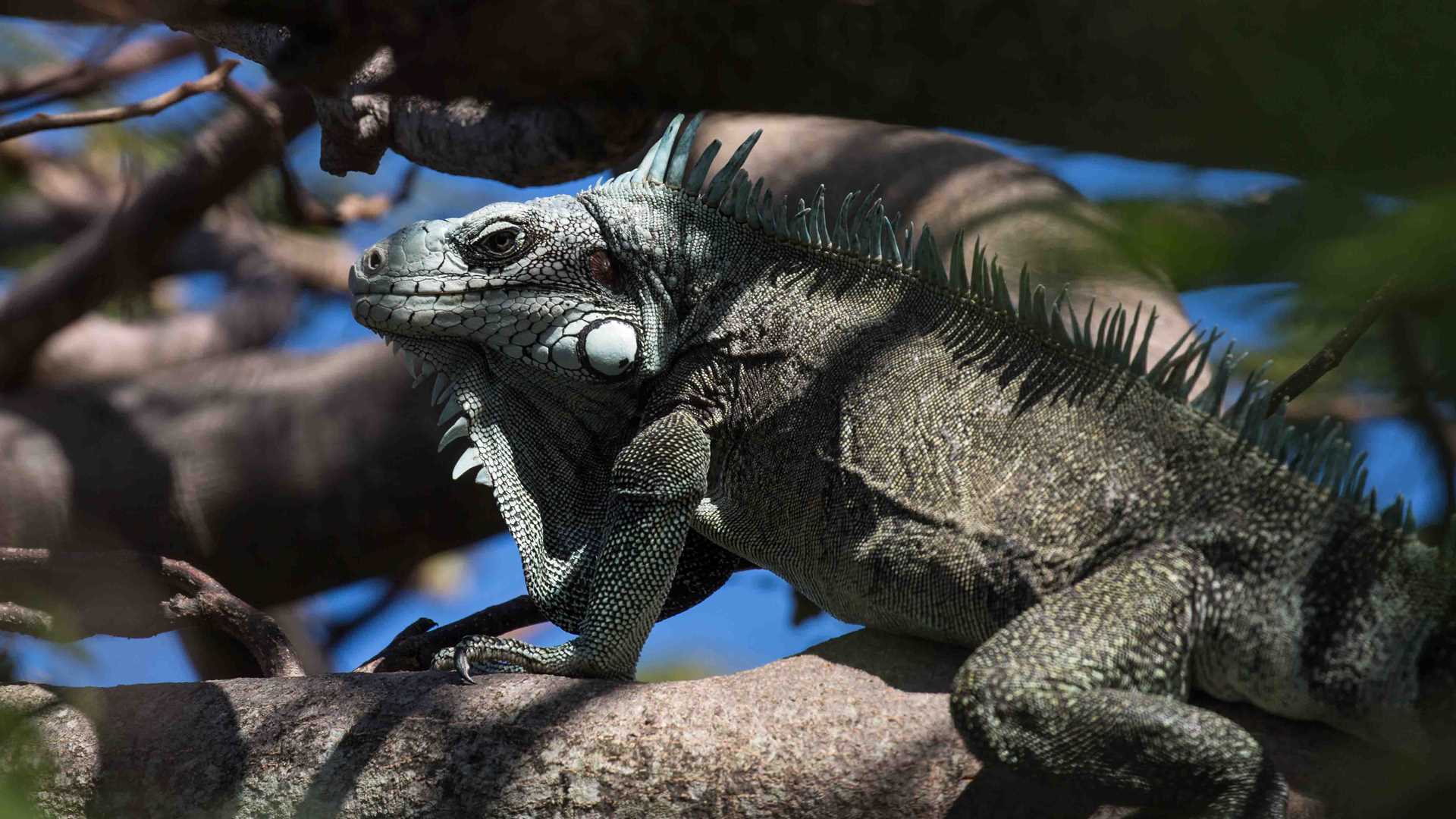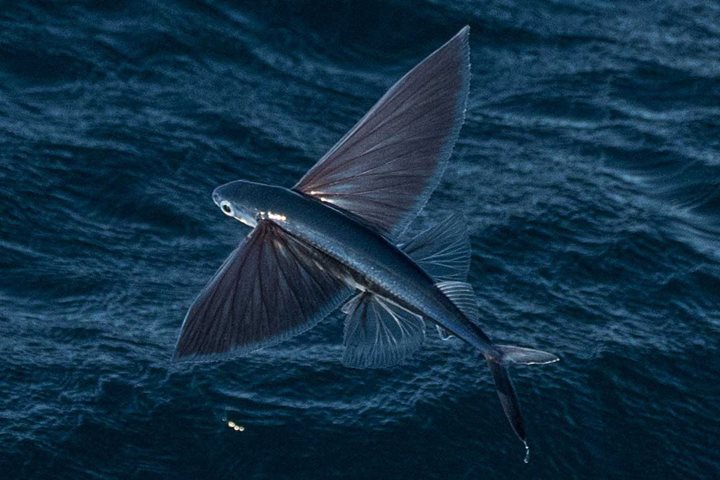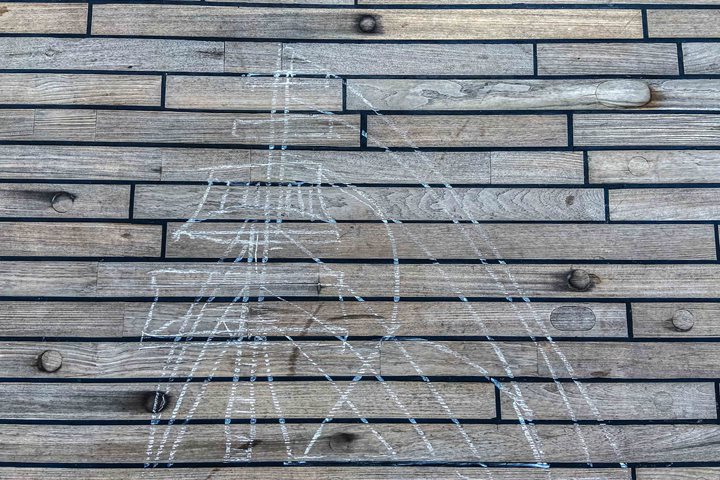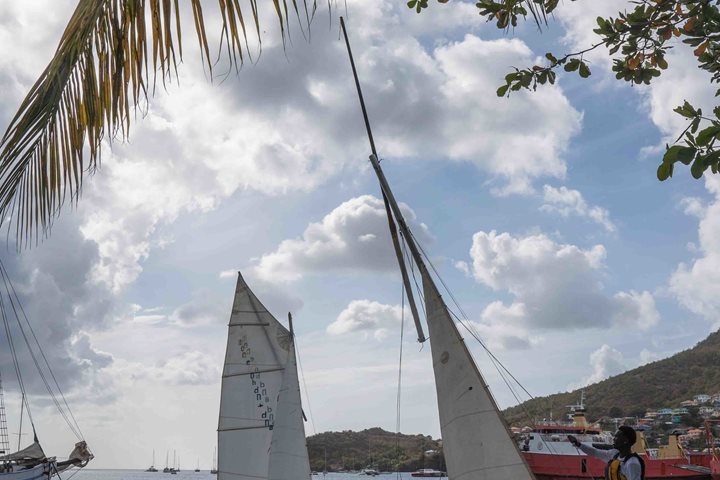Welcome to France. We dropped anchor at precisely 7:32 a.m. in the harbor in front of the village of Bourg (“City” in English) on the tiny island of Terre Haut. The sky was overcast and appeared to threaten rain but we came ashore without a drop. The isles received their name from Columbus who first saw them on November 1st, the Feast of All Saints. This small archipelago of seven islands is a dependency of Guadalupe, is a distinct region of France and is in the Départment d’Outré Mer. It has the same relationship to France as Hawaii has to the U.S. The inhabitants are French citizens, vote in all elections, and have all the perquisites of being a French citizen and a member of the European Union. The official currency here is the euro. And the shops are not inexpensive. One in particular, Maogany, is justifiably famous for its beautiful indigo dyed clothing, and a number of us made purchases.
The two most imposing buildings in the village are a lovely Catholic church, Stella Maris and the town hall, proclaiming Liberté, Egalité and Fraternité, those ideals emerging from the French Revolution. Fisherman from Brittany originally settled the small islands in this archipelago and their descendants are still here today, albeit thoroughly mixed with the Afro-Caribbean population.
Our expedition leader Tom Heffernan led us up to the magnificent overlook of Fort Napoleon built by Napoleon III between 1841 and finished in 1867. The vistas from the top of the island are remarkable–we could see Guadalupe to our north and Dominica to our south. During our visit to the fort and the museum Tom explained the crucial battle of the Saints, where the largest naval battle in the Western Hemisphere took place between April 7 and 12, 1782, concluding in the bloody defeat of the French ships under Admiral Comte de Grasse who surrendered to the English Admiral George Rodney, his old nemesis.
Today the fort contains a good museum and a botanical garden with many of the representative species of flowering trees on the Lesser Antilles on display. In addition to the trees there are wonderful cacti, euphorbia and aloes. Today we were very fortunate as the large terrestrial land iguanas were out in force and we saw at least half a dozen soaking in the sun, the largest of which was about six feet in length, including its long tail. The iguanas are protected but previously were hunted for food.
On the Zodiac back to the ship, the rain gods decided to give us a good soaking. Although thoroughly drenched from the sun shower we remained in good cheer. Lunch was on the Lido Deck board and included the justifiably famous Sea Cloud pasta, prepared inside a 50 kilo tub of reggio parmigiano cheese. The sailors went to the yards and hoisted the sails at 2 p.m. and we raced along at a respectable 6.5 knots. Some saw two humpback whales off the starboard side. Our naturalist Ian was in the Lido much of the afternoon putting together all the photos guests have contributed and he showed them on a continuous loop this evening at dinner. It is always interesting to see how different people see the same things things differently. At 7p.m. we had cocktails on the Lido and our captain gave a short presentation before inviting us to the Captain’s Farewell lobster dinner. Yum! We all chatted, feasted and drank until we happily went off to bed. Tomorrow sadly we must bid this grand old lady the Sea Cloud adieu.







